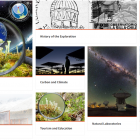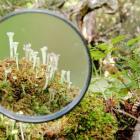Ecotourism with Hand Lenses and Astrotourism with Telescopes
Switch between the microcosm and macrocosm perspectives by clicking on the circles below.
The original virtual exhibition includes the option to switch between the microcosm and macrocosm within the individual chapters (see screenshot below).
Here we present the subchapters one after the other.
What Do We Mean by “Ecotourism with a Hand Lens”?
In the beginning, human beings challenged their limits in face of unknown situations, traveling across continents and oceans in search of new territories and resources. Today, these initial motivations may have changed, and a large number of people spend their leisure time traveling in search of personal satisfaction and new experiences. In this way, tourism is not a static concept; it requires permanent innovation processes taking environmental and cultural changes into account. The search for novel experiences that feed human curiosity and allow the discovery of new landscapes and territories becomes an imperative in the contemporary construction of the tourist offer.
Starting in 2002, the work led by Ricardo Rozzi and the Fundación Omora team in the Cape Horn Biosphere Reserve (CHBR) set out to consolidate a new dimension in the valorization of the landscape, integrating ecological sciences with environmental ethics and revealing the diversity, functionality, and, without a doubt, the beauty of micro-landscapes or “miniature forests.” For the global society of the twenty-first century, this activity awakens the curiosity of the human being to explore and value the microflora and invertebrates with which we cohabit in various ecosystems but which tend to go unnoticed due to their size (Figure 1).
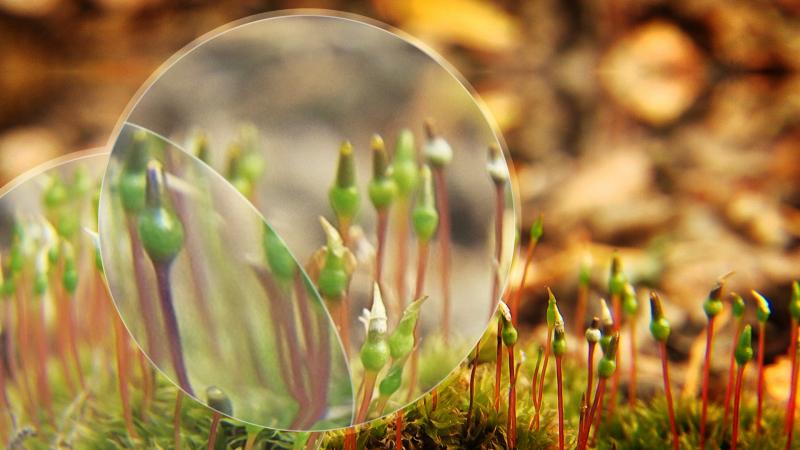
Figure 1. “Ecotourism with a Hand Lens” is a special-interest tourism activity to appreciate the diversity, beauty, and ecological relevance of small organisms such as mosses. Photograph by Jaime Sepúlveda, Parque Omora, 2010.
Figure 1. “Ecotourism with a Hand Lens” is a special-interest tourism activity to appreciate the diversity, beauty, and ecological relevance of small organisms such as mosses. Photograph by Jaime Sepúlveda, Parque Omora, 2010.
© Fundación Omora. Used by permission.
The copyright holder reserves, or holds for their own use, all the rights provided by copyright law, such as distribution, performance, and creation of derivative works.
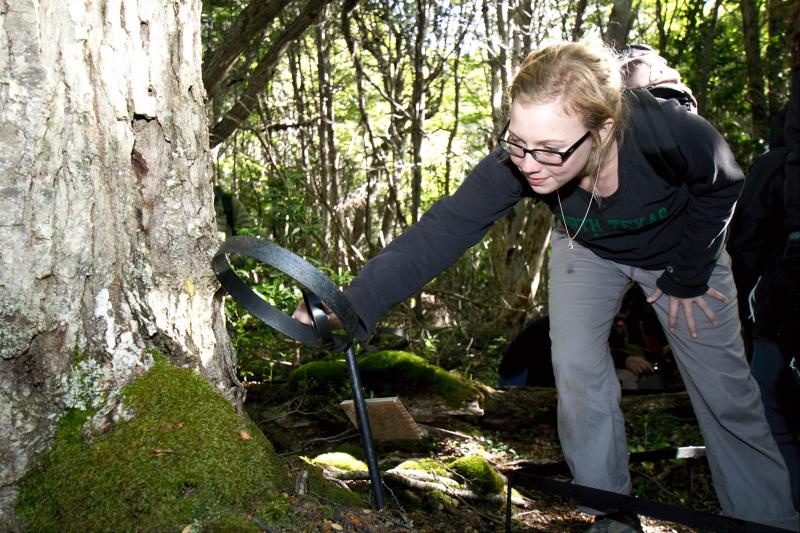
Figure 2. Graduate students practicing Ecotourism with a Hand Lens. Photograph by Adam Wilson, Omora Park, 2010.
Figure 2. Graduate students practicing Ecotourism with a Hand Lens. Photograph by Adam Wilson, Omora Park, 2010.
© Fundación Omora. Used by permission.
The copyright holder reserves, or holds for their own use, all the rights provided by copyright law, such as distribution, performance, and creation of derivative works.
At Cape Horn, the use of a magnifying glass or hand lens allows you to discover these micro-landscapes, generating a memorable experience of never-before-seen shapes, colors, and textures. According to the perspective developed by Ricardo Rozzi and the group of researchers that accompanies him, the idea—behind the concept of what is beginning to be called “Tourism with a Hand Lens” or better “Ecotourism with a Hand Lens”—is to interpret the landscape at its various scales and through a biocultural story, promoting a change in the understanding of the environment we inhabit. This activity provides a new way of doing slow tourism and was created in the Omora Park (Figure 2).
Omora Ethnobotanical Park: An Ideal Place for Ecotourism with a Hand Lens
The first formal experiences of Ecotourism with a Hand Lens were proposed in the early 2000s by an interdisciplinary group of ecologists, philosophers, and artists at the Cape Horn Miniature Forest Garden. This garden includes a network of two kilometers of trails and 20 interpretative stations at the Omora Ethnobotanical Park (Figure 3), situated along the Beagle Channel, in the vicinity of the southernmost city in the world, Puerto Williams. During this period, mainly of scientists, students, cruise travelers, institutional visitors, and members of the educational community of Cape Horn came as visitors to the Omora Ethnobotanical Park.
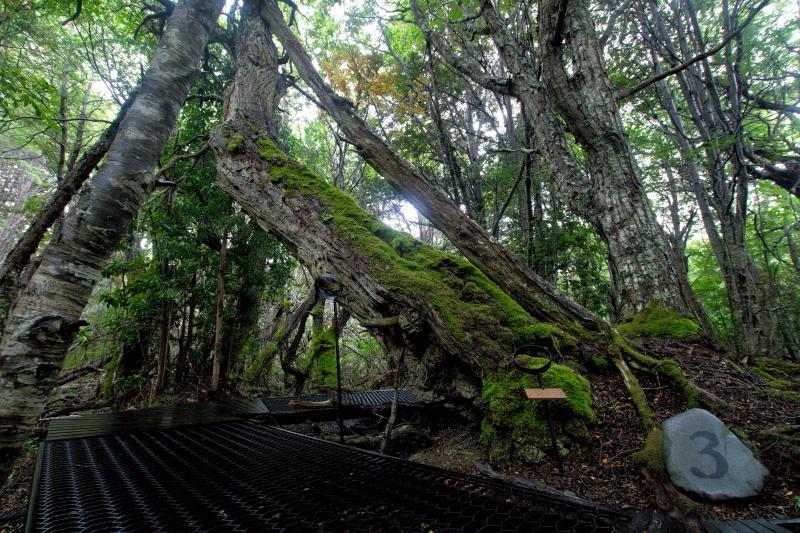
Figure 3a. Interpretive station on the Miniature Forests of Cape Horn trail at the Omora Ethnobotanical Park. Photograph by Adam Wilson, January 2010.
Figure 3a. Interpretive station on the Miniature Forests of Cape Horn trail at the Omora Ethnobotanical Park. Photograph by Adam Wilson, January 2010.
© Fundación Omora. Used by permission.
The copyright holder reserves, or holds for their own use, all the rights provided by copyright law, such as distribution, performance, and creation of derivative works.

Figure 3b. Interpretive station on the “miniature forests of Cape Horn” trail at the Omora Ethnobotanical Park. Photograph by Gonzalo Arteaga, January 2010.
Figure 3b. Interpretive station on the “miniature forests of Cape Horn” trail at the Omora Ethnobotanical Park. Photograph by Gonzalo Arteaga, January 2010.
© Fundación Omora. Used by permission.
The copyright holder reserves, or holds for their own use, all the rights provided by copyright law, such as distribution, performance, and creation of derivative works.
The Omora Park offers a sample of the high diversity of subantarctic bryoflora and protects in situ not only populations of mosses, liverworts, and lichens but also their ecological interactions with insects, fungi, bacteria, water, and soil. These interactions can be observed by visitors in their native habitats (Figure 4). The Omora Park is the first botanical garden dedicated to bryoflora with criteria of biocultural conservation, education, ecotourism, and field environmental ethics.
Ecotourism with a Hand Lens: A Unique Experience
In its more than 15 years of existence, Ecotourism with a hand lens has been characterized by allowing close contact with nature, based on observation, discovery, and reflection.
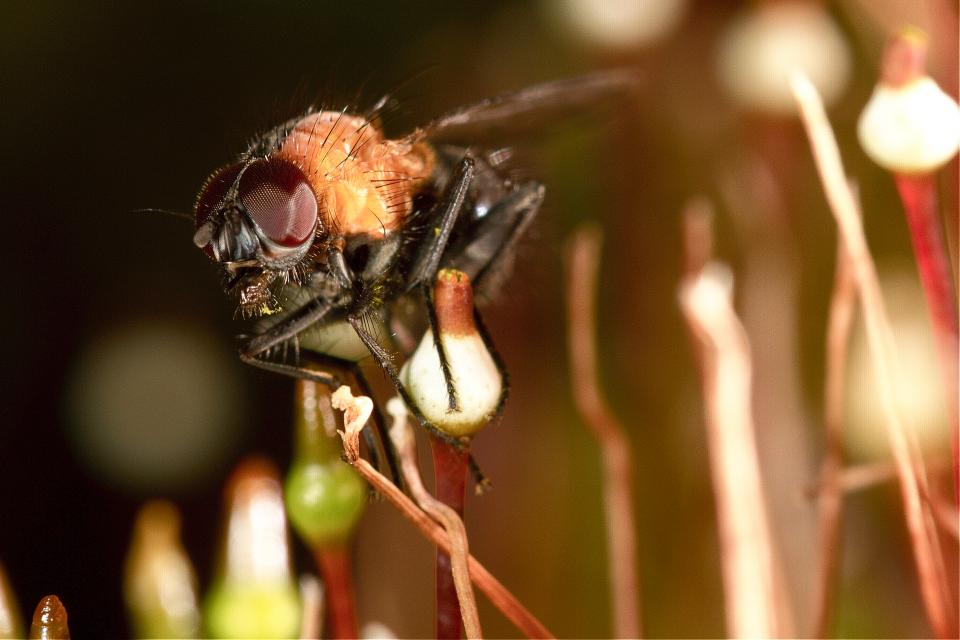
Figure 4. A mosquito midge dispersing spores of the moss Tayloria mirabilis on the interpretive trail of the “miniature forests” of Omora Park. Photograph by Adam Wilson, n.d.
Figure 4. A mosquito midge dispersing spores of the moss Tayloria mirabilis on the interpretive trail of the “miniature forests” of Omora Park. Photograph by Adam Wilson, n.d.
© Fundación Omora. Used by permission.
The copyright holder reserves, or holds for their own use, all the rights provided by copyright law, such as distribution, performance, and creation of derivative works.
Aimed at educating visitors in their condition as coinhabitants of the planet, they allow us to appreciate the various forms of life and understand their systemic role in the habitat we share. In particular, tourism experiences with a magnifying glass consist of guided activities in small groups, slow, reflective, and developed in limited extensions of land, generating limited and controllable environmental impacts.
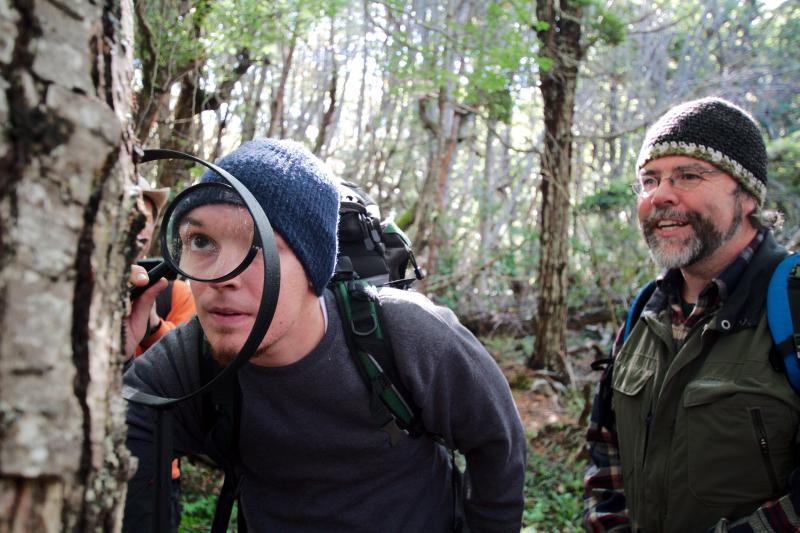
Figure 5. University of North Texas student Sean Connery during a Field Environmental Philosophy training course at Omora Park in 2010. Photograph by Adam Wilson, n.d.
Figure 5. University of North Texas student Sean Connery during a Field Environmental Philosophy training course at Omora Park in 2010. Photograph by Adam Wilson, n.d.
© Fundación Omora. Used by permission.
The copyright holder reserves, or holds for their own use, all the rights provided by copyright law, such as distribution, performance, and creation of derivative works.
Additionally, its scale and biocultural definition consolidate it as an alternative to mass tourism: this new form of tourism allows the incorporation of neighboring communities and favors local development, as well as the training of guides and specialized tourist service providers in local micro-forests, under the Field Environmental Philosophy approach designed in the Omora Park (Figure 5). Another characteristic of magnifying tourism is its ease of development along paths accessible to persons with disabilities, which implies low-mobility effort and the incorporation of a large population group, where the elderly and children play a predominant role when naming the species.
In the context of Field Environmental Philosophy, the ecotourism experience with a magnifying glass is intended to extend to different parts of the planet, without the need to deepen the carbon footprint; however for those who visit Patagonia or plan to visit the Antarctic continent, it is a great opportunity to complement your trip and live the experience in the Omora Ethnobotanical Park.
How Is Ecotourism with a Hand Lens Practiced?
To enjoy this experience, visitors are required to reach significant levels of concentration and have time to experience the textures and pigment tones of the foliage, or the movements of small invertebrates that emerge in the middle of the attractive micro-forest plot. This act, according to what was expressed by Ricardo Rozzi in 2005, also implies paying attention to observe ourselves, our breathing, emotions, and curiosity. In this way, an ethical and recreational ecotourism experience is achieved through informal education, deployed in plots of biological and cultural diversity.

Figure 6a. Ecotourism with a Hand Lens is a form of “slow tourism” that allows us to observe ourselves, with our breath, emotions, and curiosity, coinhabiting with mosses and other organisms. Photograph of Cristián Valle taken from Rozzi et al. (2010).
Figure 6a. Ecotourism with a Hand Lens is a form of “slow tourism” that allows us to observe ourselves, with our breath, emotions, and curiosity, coinhabiting with mosses and other organisms. Photograph of Cristián Valle taken from Rozzi et al. (2010).
© Fundación Omora. Used by permission.
The copyright holder reserves, or holds for their own use, all the rights provided by copyright law, such as distribution, performance, and creation of derivative works.
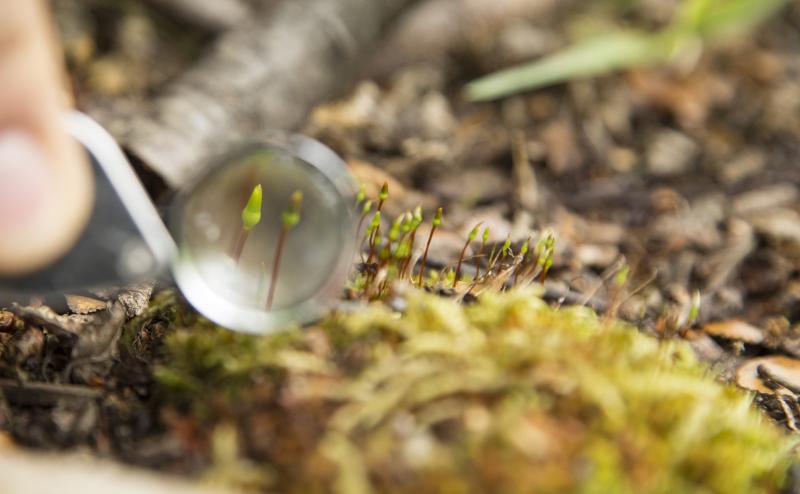
Figure 6b. Ecotourism with a Hand Lens is a form of “slow tourism” that allows us to observe ourselves, with our breath, emotions, and curiosity, coinhabiting with mosses and other organisms. Photograph of Cristián Valle taken from Rozzi et al. (2010).
Figure 6b. Ecotourism with a Hand Lens is a form of “slow tourism” that allows us to observe ourselves, with our breath, emotions, and curiosity, coinhabiting with mosses and other organisms. Photograph of Cristián Valle taken from Rozzi et al. (2010).
© Fundación Omora. Used by permission.
The copyright holder reserves, or holds for their own use, all the rights provided by copyright law, such as distribution, performance, and creation of derivative works.
The Propagation of Ecotourism with a Hand Lens
Throughout Chile, in addition to the Omora Park, one of the protected areas that has implemented Ecotourism with a Hand Lens experiences is the Altos de Cantillana Reserve, located south of the Santiago Basin in the central zone of Chile. This area corresponds to a global biodiversity hotspot of Mediterranean flora and presents varied ecosystems, among which the sclerophyllous forest, the deciduous oak forest of Santiago, and the relict High Andean scrub from the last glaciation stand out. On the Big Island of Chiloé and in the Chilean Lake District, it has been implemented in private protected areas, such as Los Senderos de Chepu and Reserva Huilo-Huilo. Recently, the regional government of Aysén adapted the methodology of the Omora Park in a training program called “Ecotourism with a Hand Lens: Bryophytes, Lichens and Freshwater Macroinvertebrates” in Queulat National Park.
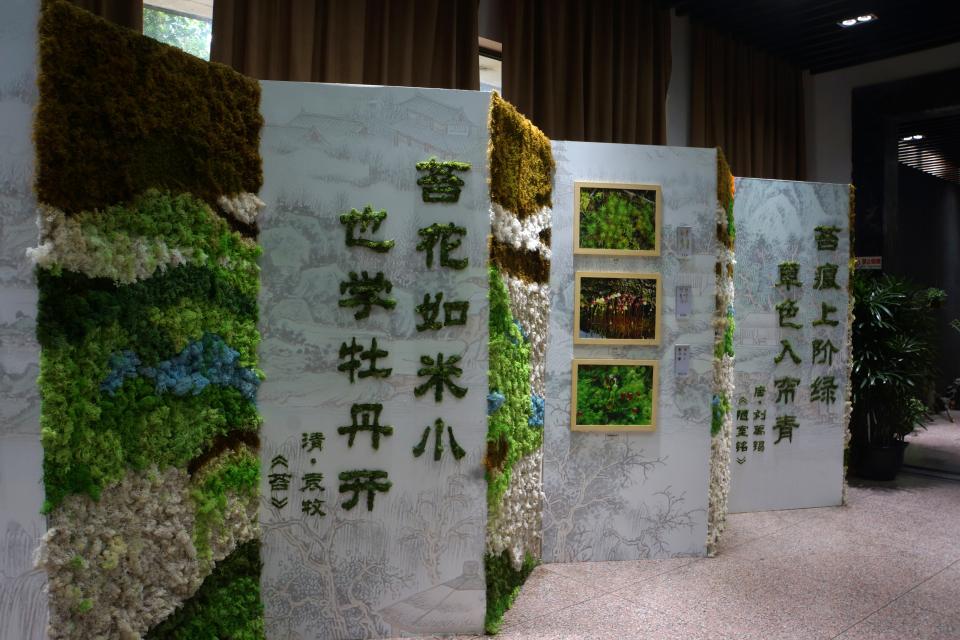
Figure 7. An Ecotourism with a Hand Lens exhibition focused on mosses and art at Shenzhen Fairy Lake Botanical Garden, Shanghai. Photograph by Li Zhang in Zhu, 2018.
Figure 7. An Ecotourism with a Hand Lens exhibition focused on mosses and art at Shenzhen Fairy Lake Botanical Garden, Shanghai. Photograph by Li Zhang in Zhu, 2018.
© Fundación Omora. Used by permission.
The copyright holder reserves, or holds for their own use, all the rights provided by copyright law, such as distribution, performance, and creation of derivative works.
At an international level, tourism with a hand lens was adapted in 2012 in Bangor, Wales, United Kingdom as well as in an exhibition at the Shenzhen Fairy Lake Botanical Garden in Shanghai, China in 2014. However, as the botanical garden in Shanghai is not a natural reserve, this experience is with cultivated mosses. In Germany, in 2006, a “moss garden” was inaugurated in the Berlin Botanic Garden and Botanical Museum, which invites visitors to discover it through lenses and magnifying glasses. Finally, since 2021 there has been an active collaboration between Ricardo Rozzi and his team and Senckenberg Museum in Frankfurt.
Benefits of Ecotourism with Hand Lenses
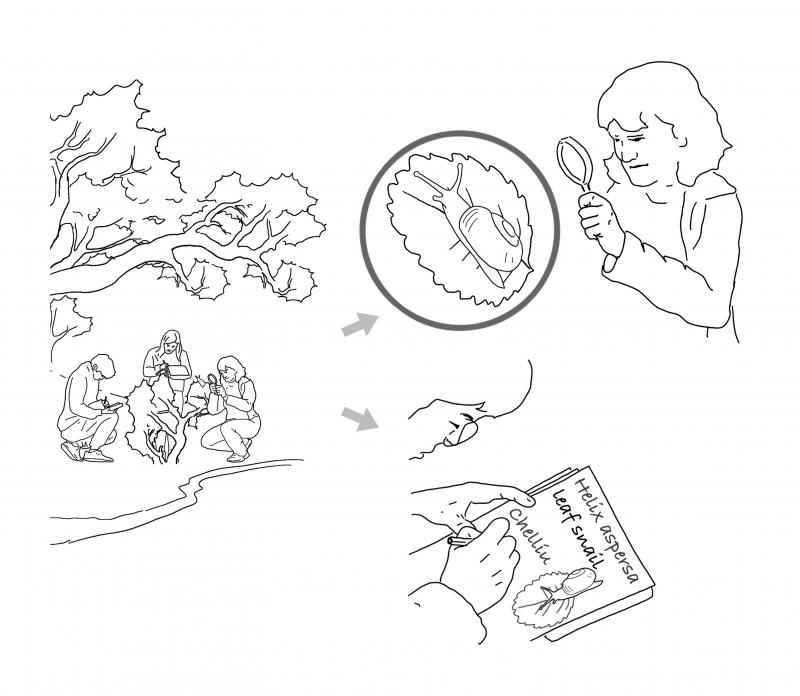
Figure 8. Scheme to illustrate that the experience of Ecotourism with a Hand Lens involves the active participation of visitors in, for example observing, drawing, and naming mosses. This activity can be practiced in everyday habitats, such as gardens, parks, or schoolyards. Illustration by Mauricio Álvarez, adapted from Rozzi and Tauro (2023).
Figure 8. Scheme to illustrate that the experience of Ecotourism with a Hand Lens involves the active participation of visitors in, for example observing, drawing, and naming mosses. This activity can be practiced in everyday habitats, such as gardens, parks, or schoolyards. Illustration by Mauricio Álvarez, adapted from Rozzi and Tauro (2023).
© Fundación Omora. Used by permission.
The copyright holder reserves, or holds for their own use, all the rights provided by copyright law, such as distribution, performance, and creation of derivative works.
Understanding Ecotourism with a Hand Lens implies valuing the curiosity of the human being. Viewing a landscape magnified through a lens, visitors discover and appreciate an exuberant diversity of life forms. For example, they stop at the unknown distinctive features of the microflora: mosses, liverworts, hornwigs, and lichens. One of its advantages is that it takes place in a relatively small space, where various species can be explored. In this way, micro-landscapes are related to landscapes commonly known as gardens and squares (Figure 8). In particular, the research carried out by Ricardo Rozzi and Alejandra Tauro in 2023 allows us to identify the didactic value of this form of observation, which is to recognize the importance of small beings in nature. The discovery and observation of these beings, which were previously “invisible” to most of the visitors, creates awareness of how little we know about our environment, and invites us to act more cautiously. In this context, in 2010, Rozzi and other authors indicated that Ecotourism with a Hand Lens represents an ethical practice that contributes to a respectful cohabitation in the biocultural diversity in which we are immersed.

What Do We Mean by Astrotourism?
The relationship between traveling and observing the sky is deeply rooted in the curious essence of the human being. This is how systematic stellar observation, together with the technological development of navigation instruments, allowed the first travelers to trace and travel new routes, circumnavigate continents, travel seas and oceans, all over the world.
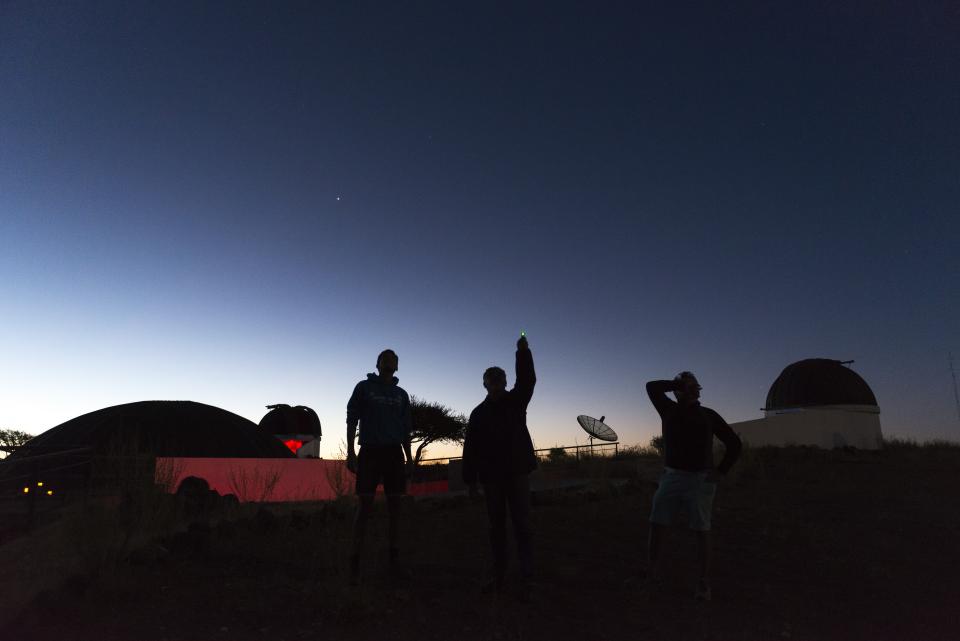
Figure 1. Naked-eye celestial observation as an introduction to astronomical observation, taking advantage of the quality of the skies of the Commune of Combarbalá, Cruz del Sur Observatory. Unknown photographer, n.d.
Figure 1. Naked-eye celestial observation as an introduction to astronomical observation, taking advantage of the quality of the skies of the Commune of Combarbalá, Cruz del Sur Observatory. Unknown photographer, n.d.
© Sernatur. Used by permission.
The copyright holder reserves, or holds for their own use, all the rights provided by copyright law, such as distribution, performance, and creation of derivative works.
Curiosity for the unknown is the meeting point between astronomy and tourism, giving shape and meaning to what we know as astrotourism, a tourist practice associated with recreational and educational experiences that bring the traveler closer to the observation and understanding of astronomical phenomena and of the cosmos. Astrotourism is also known as celestial ecotourism or star tourism.
In relation to the motivations for the development of this type of tourism, currently more than 80 percent of the world’s population lives under skies polluted by artificial lights, and a third cannot see the Milky Way at night. The lack of access to the stars makes the urban dweller move away from the rhythms of nature and the universe. Therefore, being able to enjoy a sky free of light pollution has become a desire for many people, who are finding through astrotourism a formula to rediscover the emotion of looking toward the sky and observing the true spectacle that the firmament offers us (Figure 1).
Who Practices Astrotourism?
The growing awareness of the imperative need to guarantee preservation of the planet’s biodiversity through greater knowledge and environmental and cultural protection connects with deep motivations based on leisure and the creation of dark skies for the enjoyment of starry nights, and with motivations related to cultivating a greater knowledge of the sky, celestial objects, and every cultural aspect related to them. In this way, more and more travelers attest that the observation and understanding of the cosmos are one of the elements that motivate the selection of tourist destinations, activities, and experiences.
Those interested in astrotourism, depending on the provision made by the “sky” as a resource to satisfy the need for travel, can be basically broken down into two large groups of people: amateur astronomers and the general public.
Astrotourism in Chile
Northern Chile in particular is a unique natural laboratory for observing the cosmos for astronomical purposes. Thanks to the transparency of its skies, 40 percent of the world’s astronomical observations are made in Chile, and according to estimates this could reach 70 percent in the coming years. In this sense, if the tourist activity is characterized by offering visitors new, unique, and memorable experiences, the opportunity to observe the sky from Chile becomes, in itself, an opportunity impossible to replicate anywhere else on the planet.
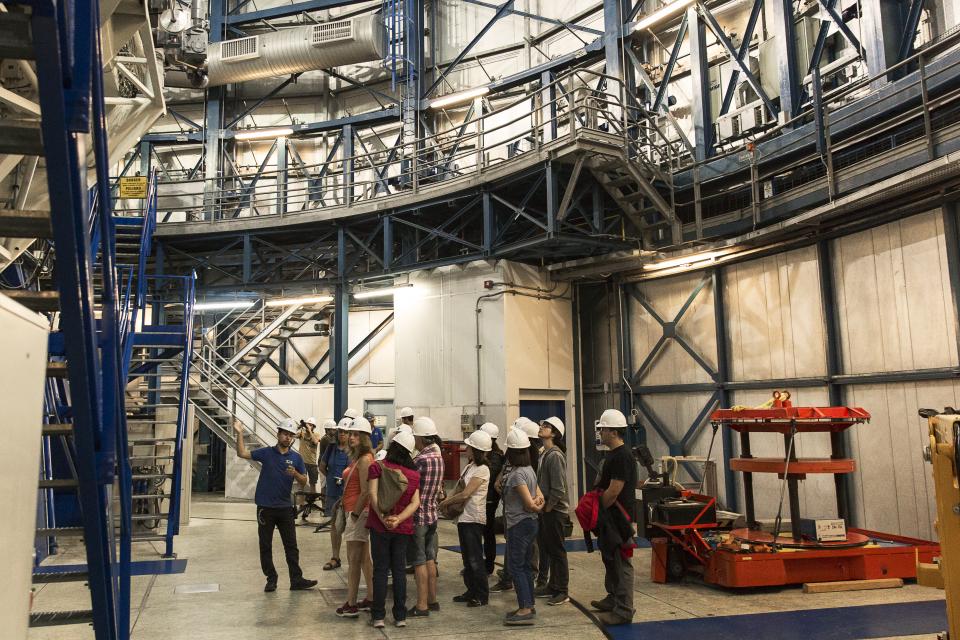
Figure 2. The astronomical facilities are a great visitor attraction; in the image you can see a guided tour of the Cerro Paranal Observatory. Unknown photographer, n.d.
Figure 2. The astronomical facilities are a great visitor attraction; in the image you can see a guided tour of the Cerro Paranal Observatory. Unknown photographer, n.d.
© Sernatur. Used by permission.
The copyright holder reserves, or holds for their own use, all the rights provided by copyright law, such as distribution, performance, and creation of derivative works.
This differentiation substantially increases the territorial valuation and allows the positioning of Chile at the forefront of world astronomical tourism (Figure 2). For example, in 2015, the International Dark Sky Association (IDA) declared the astronomical site of the AURA Observatory in the Elqui Valley the first International Dark Skies Sanctuary in the world. In this way, astrotourism in Chile takes advantage of the more than 300 clear nights a year and the low light pollution in the north of the country to gaze at the stars through some of the most powerful scientific observatories in the world.
How Astrotourism experiences are developed in Chile
In particular, two studies that analyze the dynamics of astrotourism in Chile for both national and international tourists (CORFO, 2016a, b) identify the main activities that attract tourists linked to celestial observation as: visiting scientific observatories and visiting parks or nature reserves to observe the night sky, eclipses, and other celestial phenomena. An example of this could be seen on 2 July 2019, when one of the most important astronomical events in the world was experienced: the total solar eclipse. This phenomenon made more than three hundred thousand people come to the regions with the best conditions for its observation, offering the people who witnessed it from our country a unique tourist attraction.

Figure 3. Ideal equipment for visitors to develop high-resolution photographs of the sky and its stars through astrophotography, El Pangue Observatory, Vicuña Commune. Unknown photographer, n.d.
Figure 3. Ideal equipment for visitors to develop high-resolution photographs of the sky and its stars through astrophotography, El Pangue Observatory, Vicuña Commune. Unknown photographer, n.d.
© Sernatur. Used by permission.
The copyright holder reserves, or holds for their own use, all the rights provided by copyright law, such as distribution, performance, and creation of derivative works.
Juárez Alcázar distinguishes five types of astrotourism experiences: sky interpretation sessions, visits to research facilities, astronomical viewpoints, planetariums, and g-astronomy (astronomy-themed gastronomy). However, the diversification of experiences around astrotourism goes beyond observing the sky through a lens, telescope, or screen.
From the observation and interpretation of the sky with the naked eye to local guides who explain the ancestral understanding of the sky over virtual tourism that allows visitors to remotely access a telescope located in the Atacama Desert, astrotourism offers an opportunity to design innovative tourism products with extensive options to incorporate local communities trained in visitor care.
Among these activities in Chile are: the option to enjoy overnight stays under starry skies and astrophotography (Figure 3) in the Elqui Valley; gastronomy inspired by the sky and the traditions of the original peoples; archaeoastronomy and astromusic in San Pedro de Atacama; hiking and horseback riding for contemplation at night, mainly on full moon nights, in the valleys of Santiago; thermalism in the light of the stars in the Tarapacá region; and also innovation such as gamification or “starparties,” crafts inspired by the sky, ancestral celestial baths, etc.
It is encouraged that these unique experiences are developed within the framework of sustainability, motivating service providers to join the Sustainability Seal and travelers to schedule long-stay trips and offset their carbon footprint, to mitigate the effects of tourism on climate change.
Main Destinations and Astrotourism Experiences in Chile
Astrotourism can be practiced throughout Chile, and in particular between the regions of Antofagasta and Coquimbo in the tourist destinations of La Serena, Valle del Elqui, San Pedro de Atacama, and Antofagasta. It is possible to find agencies that are responsible for transporting and providing accommodation and equipment and interpretation for stargazing.
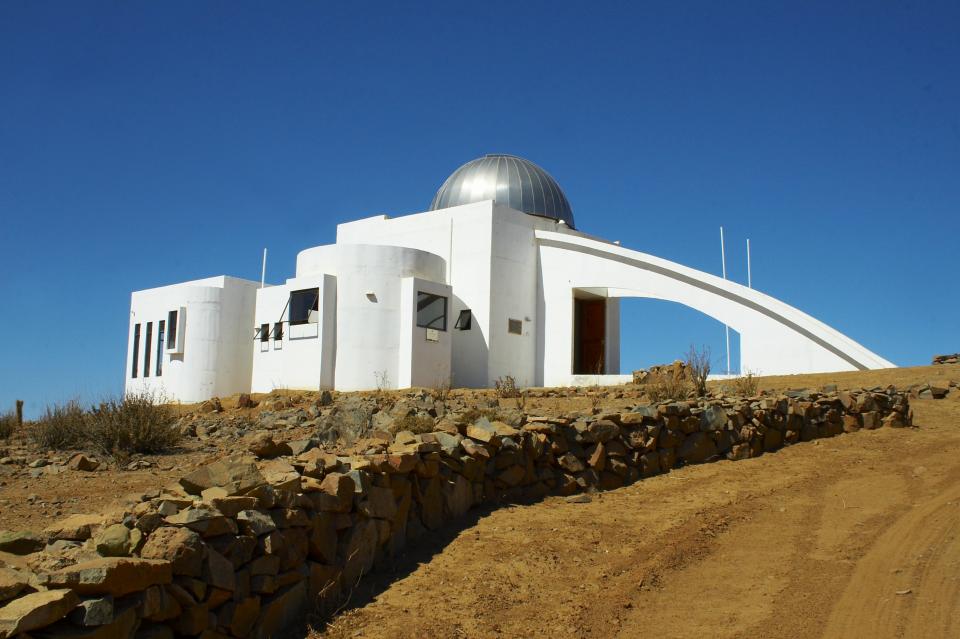
Figure 4. An interesting observatory built especially to welcome visitors and stimulate the development of tourism in the town of Andacollo. If you go inside, it is possible to see the stars from a telescope that emerges from a dome. Collowara, Andacollo, Chile. Unknown photographer, n.d.
Figure 4. An interesting observatory built especially to welcome visitors and stimulate the development of tourism in the town of Andacollo. If you go inside, it is possible to see the stars from a telescope that emerges from a dome. Collowara, Andacollo, Chile. Unknown photographer, n.d.
© Sernatur. Used by permission.
The copyright holder reserves, or holds for their own use, all the rights provided by copyright law, such as distribution, performance, and creation of derivative works.
The interest in opening up astronomical activity to tourism has led municipalities, foundations, and the wider public to build and make available to establish what is called “Tourist Astronomical Observatories” (Figure 4). In 2018 the registered number of observatories destined exclusively for tourist and educational purposes throughout Chile amounted to 35, 4 of which are located in the Antofagasta Region, 1 in the Atacama Region, 15 in the Coquimbo, 2 in the Valparaíso Region, 5 in the Santiago Metropolitan Region, 2 in the O’Higgins Region, 1 in the Maule Region, 4 in the Biobío Region, and 1 in the Los Lagos Region.
Switch between the microcosm and macrocosm perspectives by clicking on the circles above.
- Previous chapter
- Next chapter




